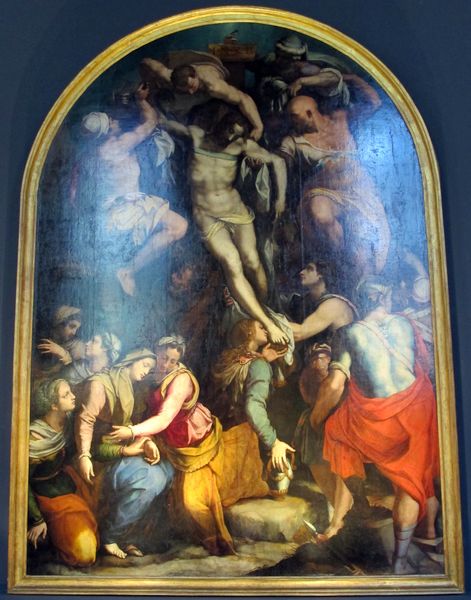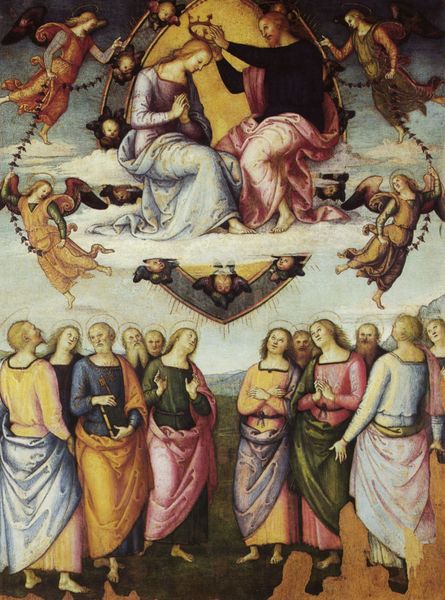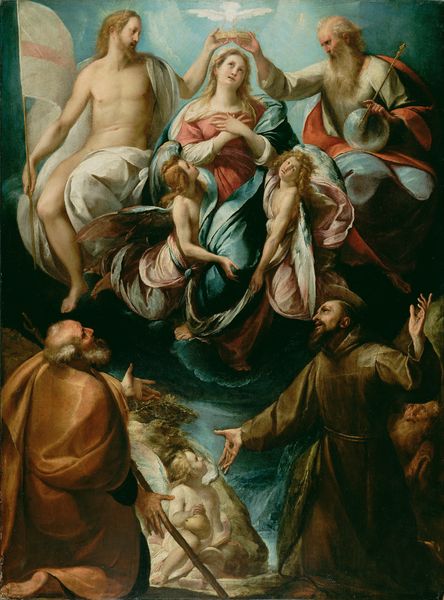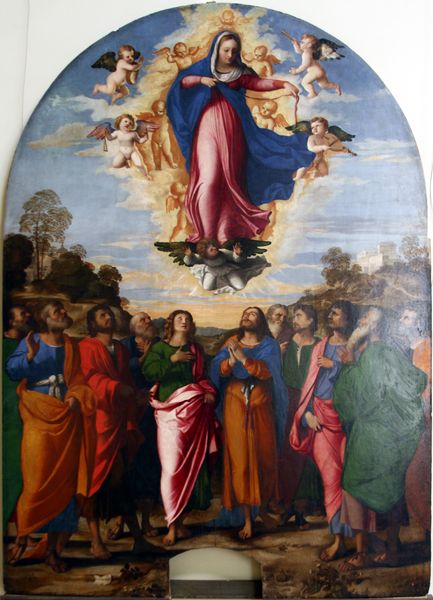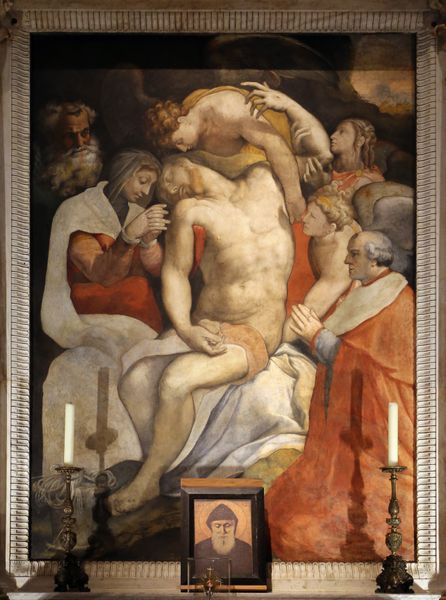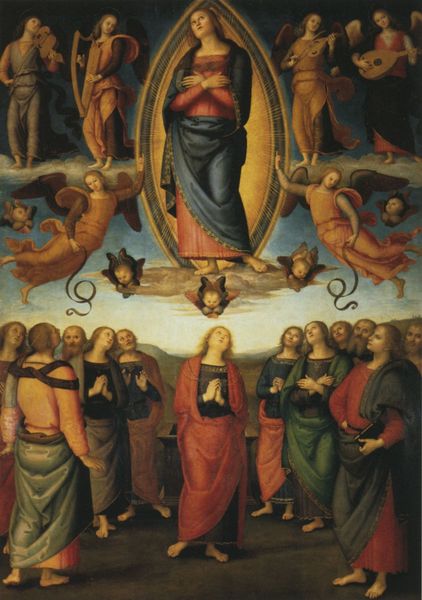
Deposition 1548
0:00
0:00
francescoderossifrancescosalviaticecchino
Basilica di Santa Croce, Florence, Italy
painting, oil-paint, textile
#
high-renaissance
#
narrative-art
#
painting
#
oil-paint
#
textile
#
holy-places
#
figuration
#
oil painting
#
history-painting
#
italian-renaissance
Copyright: Public domain
Curator: Let’s take a look at Francesco Salviati's "Deposition," an oil painting from 1548 currently housed in the Basilica di Santa Croce in Florence. It presents a powerful and moving scene. Editor: Indeed. Immediately, I'm struck by the dynamic arrangement of the figures and how they interact, emphasizing grief and turmoil through posture and gesture. Curator: Absolutely. The composition's Mannerist influence is evident in the elongated figures, their intricate poses, and the theatrical lighting, which amplifies the drama of the moment. Consider the materiality here: the rich impasto and layering of pigments used to depict fabrics that underscore the status and reverence surrounding the subject. Editor: Yes, but let’s delve into those materials and the processes behind their manipulation. Oil paint, obviously, was increasingly sophisticated by this point. I wonder about the specific pigments and binding agents Salviati employed and how these contributed to the painting’s longevity and vibrancy we still observe today. Curator: The colour palette itself deserves analysis. The muted tones serve to highlight the pale body of Christ, thus functioning to bring a sombre feel and underscore the significance of his sacrifice. Note the pyramidal structure—a classic High Renaissance element stabilizing what could otherwise be chaotic. Editor: That order contrasts the labor required. Imagine the preparatory sketches, the grinding of pigments, the weaving of canvas-- a complex workshop production hidden behind the apparent ease of the final image, one consumed within ritual. How were assistants involved in the labor process? What social hierarchies were at play within the commission, painting, and display? Curator: Well, regardless of how he accomplished it, Salviati captures the emotional crescendo of the Deposition. It serves as a testament to faith and human sorrow within this space, resonating on both an intellectual and sensory plane through careful structure. Editor: Precisely, it leaves one wondering about the layers of artistic skill, collective labor, and social positioning which bring us to a cultural experience, that we can admire or dissect at the turn of the 21st century.
Comments
No comments
Be the first to comment and join the conversation on the ultimate creative platform.
